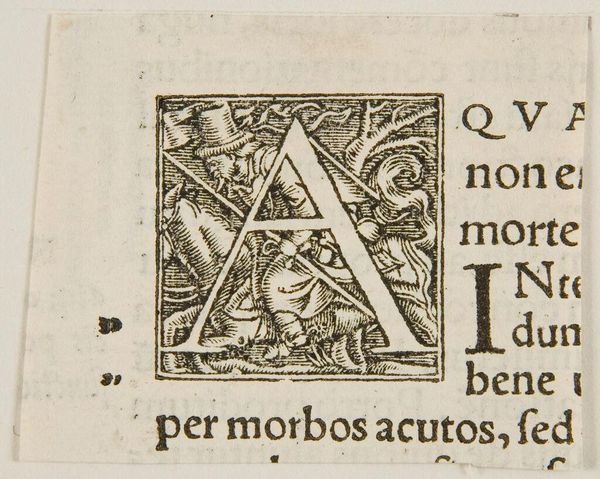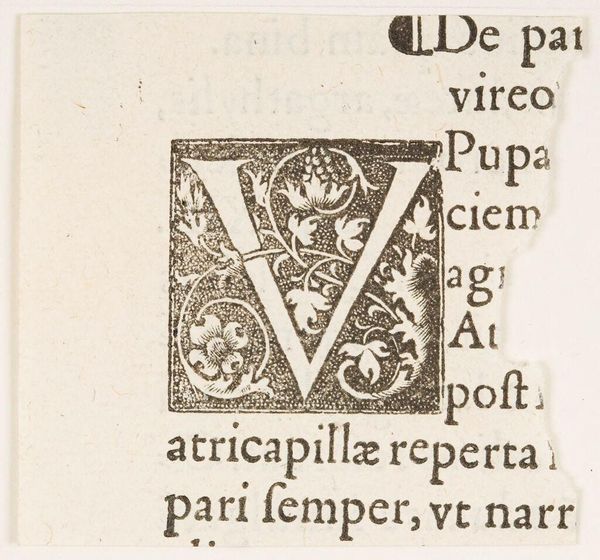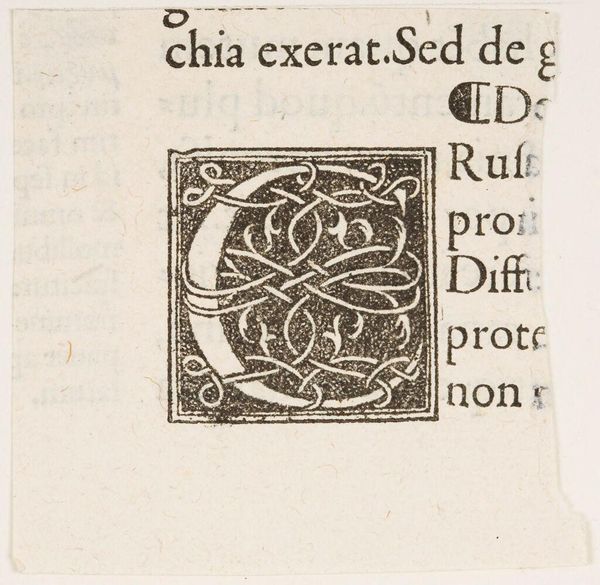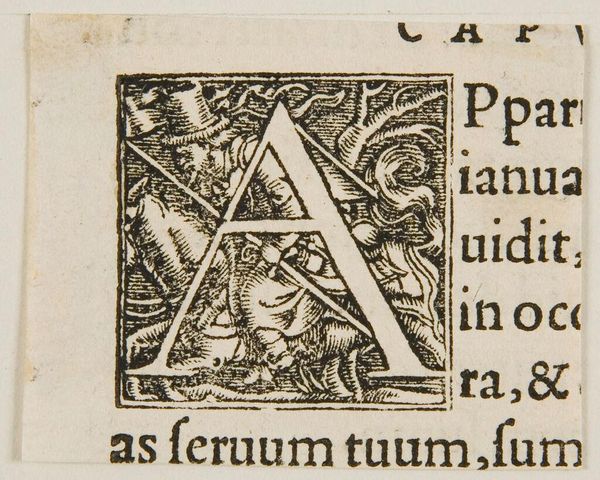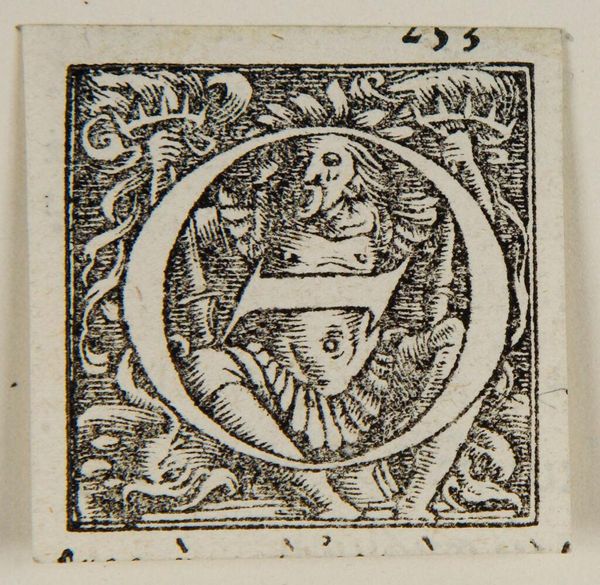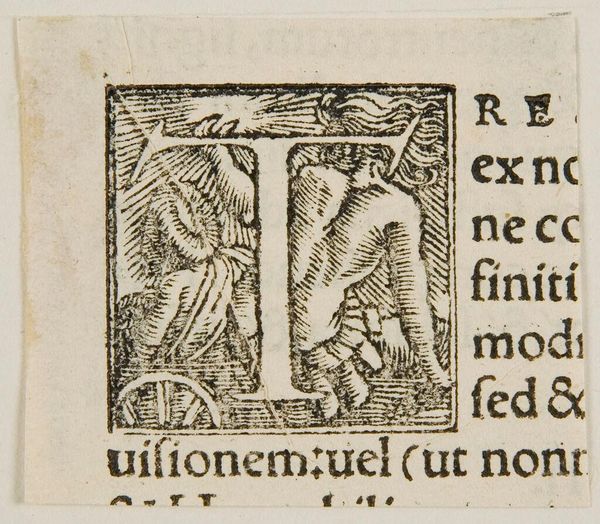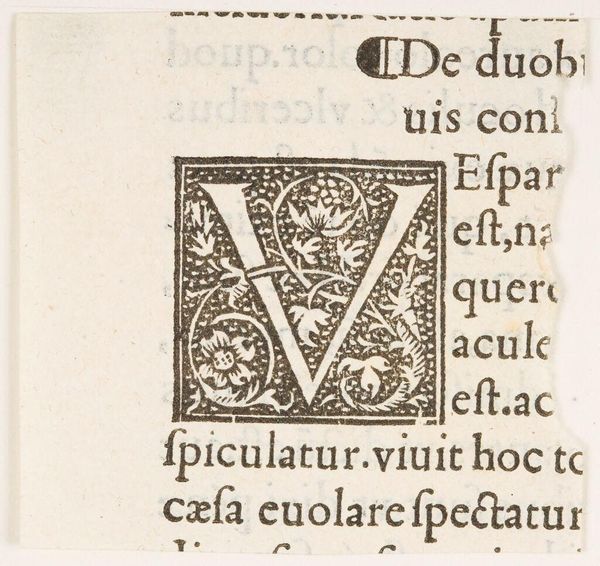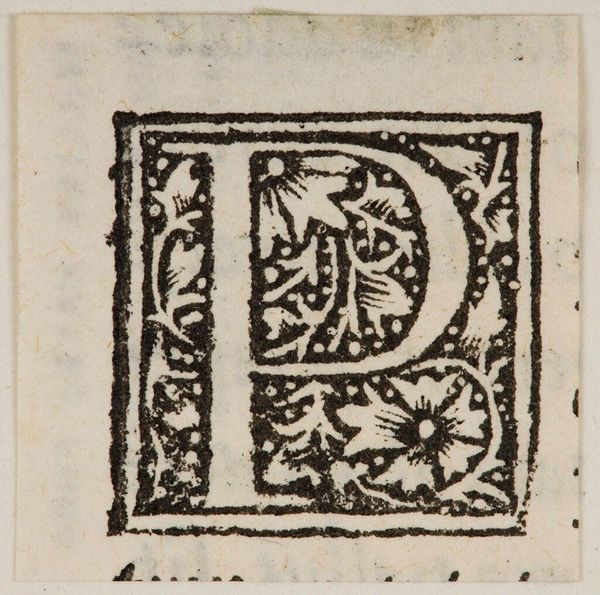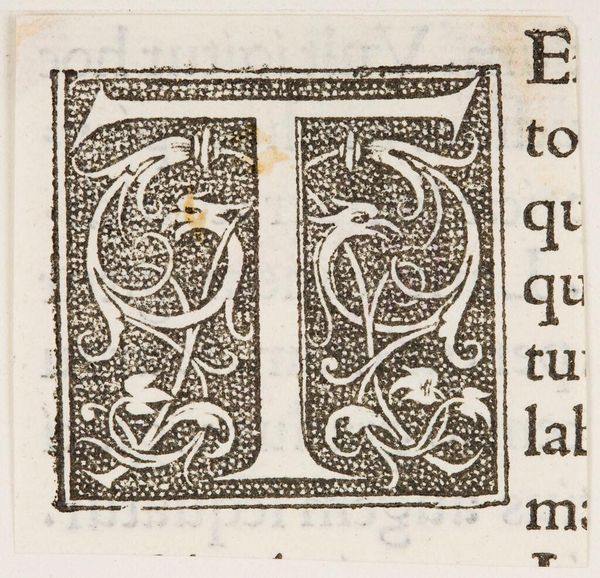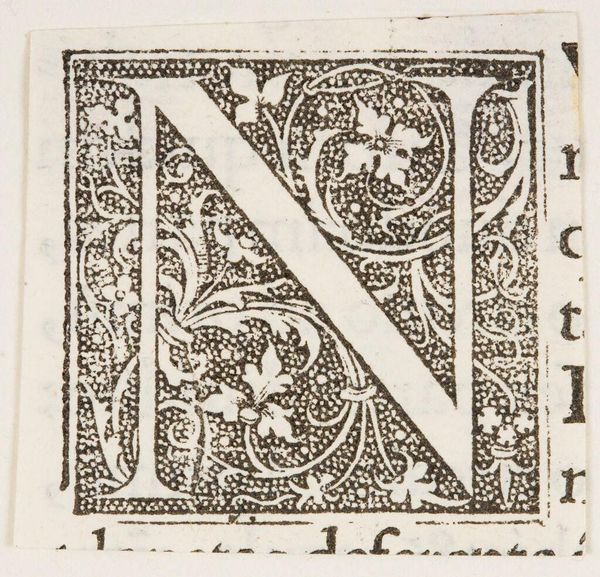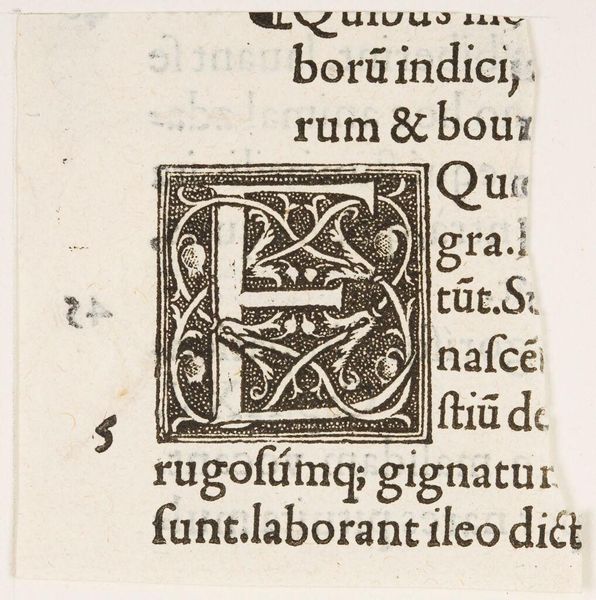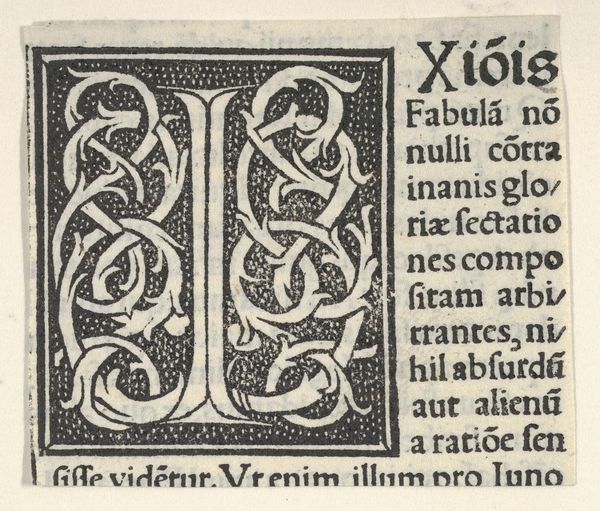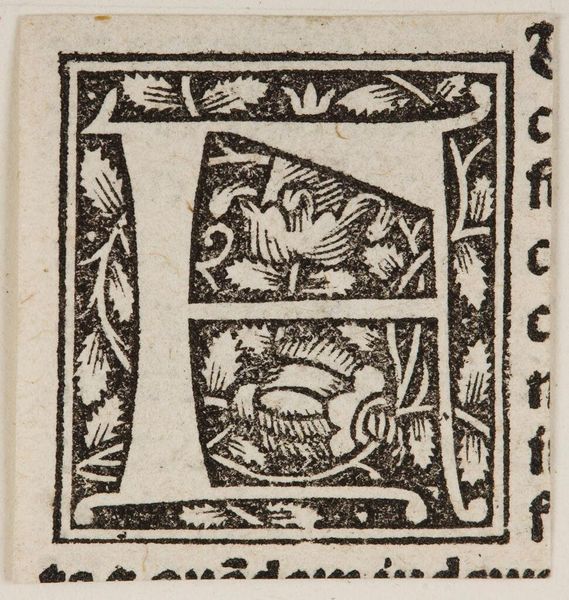
Copyright: CC0 1.0
Curator: Here we have an intriguing print, titled "Greek Letter Sigma," created by an anonymous artist. Editor: It's quite striking. The bold, black lines against the pale background create a powerful contrast, almost like a woodcut. Curator: Precisely. The density of the lines suggests a labor-intensive process, requiring skill and time. Consider the economic factors influencing printmaking during this period – the availability of materials, the skill of the artisans. Editor: I can't help but wonder about the context in which this "Sigma" was created. It feels almost like a fragment, surrounded by text. Were these letters part of a larger project, perhaps a political statement, a form of protest, or just commercial printing? Curator: It's likely part of a printed text from the early printing press era. We see the use of the Greek alphabet here, a visual reminder of the classical tradition that was formative to early modern discourses. Editor: Knowing the historical and material production methods informs our understanding of this piece. It bridges the gap between craft and art, challenging traditional hierarchies. Curator: Absolutely. It invites us to reconsider the value we place on anonymous labor and the impact of mass production on artistic expression. Editor: This sigma makes me think about the importance of examining the margins, the in-between spaces of art history, for a more inclusive understanding. Curator: Indeed. By attending to the materials and historical context, we gain deeper insights into the conditions of its creation and its place in the world.
Comments
No comments
Be the first to comment and join the conversation on the ultimate creative platform.
